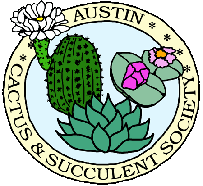7:00 pm - Refreshments and Conversations
7:30 pm - Program: South Africa, The Klein Karoo to the Little and Great Karoo by Woody Minnich.
Nowhere in the world is there a more floristic region than that of South Africa. The diversity of plants, from the monocots to the dicots, is just fantastic. From the bulbs and grasses to the abundant succulents, never is there a time when flowers aren’t present . Besides the great wealth of very specialized and often endemic succulent plants, there is also a wonderful array of curious animals. The lizards, snakes and tortoises are first to grab your attention, while the often secretive mammals range from the small Meer cats, to the rambunctious Baboons and numerous large herbivores. None of these are to be missed! There are also very specialized and often numerous populations of insects. These striking creepy-crawlers are like the plants, everywhere! South Africa is a magnificent place of color, form and texture. Life is everywhere and there is never a dull moment. No matter how many trips one makes to these areas, finding something intriguing and beautiful is always easy!
The region of South Africa, from Uniondale to Oudtshoorn, to Ladismith, to Montagu, is commonly called the Klein Karoo. From this region south and west, one travels through the Little Karoo and the Great Karoo. Heading north you eventually merge into the southern reaches of the well known Richtersveld, it is here we will conclude our presentation near the peaceful little town of Springbok. Needless to say, the richness of plants and animals from this area is far greater than one presentation can show. Thus, a second part to this South African adventure (part 2) will cover the Richtersveld and north to the Orange River, the famous land of the Nama people.” Namaqualand, Land of the Halfmens”.
In South Africa, the sheer number of succulent plants is astounding and the niches they inhabit are most unique and fascinating. Some of the genera we will see from this expedition include: Aloe, Avonia, Anacampseros, Conophytum, Crassula, Cotyledon, Dioscorea, Gibbeaum, Glottiphyllum, Haworthia, Larryleachia, Lithops, Monsonia, Pachypodium, Pelargonium, Quaqua, Senecio, Stapelia, Tylecodon as well as, many other seldom seen or rare genera. The non succulent plants are also a feature of this area, ranging from the numerous bulbs to the breath taking Proteas. As is often the case, the time of the year can make an incredible difference in the way plants appear, thus modifying their color, size and shape. We made this trip in South Africa’s winter – spring, August 2008. The colors created by the stress of winter were often spectacular, and it’s amazing the number of plants that choose to produce their beautiful flowers during this season.
Visiting this kind of succulent rich expanse truly opens one’s eyes to the diversity of the plants we love so much. Seeing them in habitat also helps to give us the knowledge needed to better cultivate them successfully in the greenhouse and garden. Hopefully, for those of you unable to travel to these special places where so many succulents grow, this presentation will allow you gain insight into some of the secrets found, while being in South Africa’s wild places.
Wendell S. (Woody) Minnich
Woody, as he is commonly known, grew up in the Mojave Desert and has had an attraction to desert plants and animals since the early 1950’s. He has been involved with the cactus and succulent world as a grower, field explorer, club and organization leader, writer, photographer, lecturer and presenter.
Having been a speaker all over the world, Woody is most often associated with giving presentations on his field work from the places he has traveled, such as: Argentina, Australia, Bolivia, Brazil, Chile, Madagascar, Mexico, Namibia, New Zealand, Peru, Socotra, South Africa, the United States and Yemen. He is also recognized for having operated the nursery Cactus Data Plants since 1975. Woody’s show quality plants are often considered one of the standards for staging and horticultural achievement. His favorite genera include: Adenium, Ariocarpus, Astrophytum, Copiapoa, Cyphostemma, Fouquieria, Gymnocalycium, Lithops, Mammillaria, Melocactus, Pachypodium, Turbinicarpus and Pachycauls in general.
Woody and his wife, Kathy, now live in New Mexico between Albuquerque and Santa Fe. He is a retired secondary school teacher of 32 years where he taught Graphics, Art and Architecture. In the cactus and succulent hobby, Woody is recognized for his high energy and creative spirit. As an educator, he has become an important part of our hobby and thus is an honorary life member of nine C&S societies. With 45 years in the hobby and 47 years in the field, he has many experiences to share and numerous photos to show.



